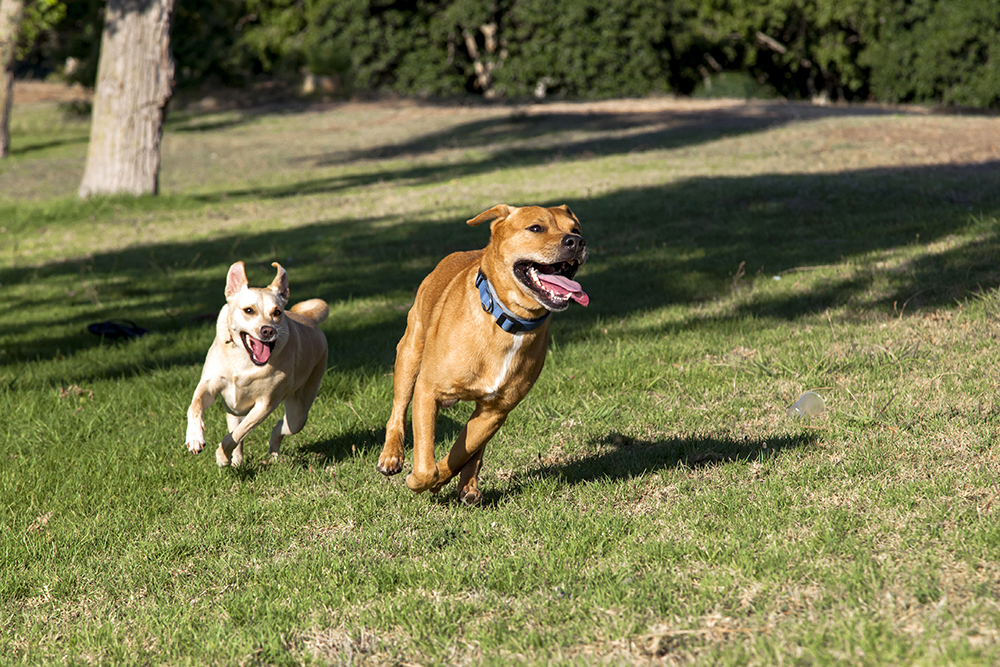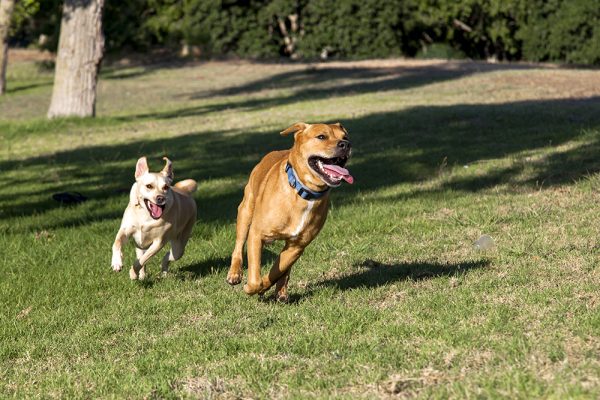Click to Skip Ahead
As a pet parent, I love consistency and convenience. So if it were up to me, off-leash dog parks would be like McDonald’s franchises; essentially identical and almost everywhere on the planet. In reality, dog parks can run the gamut from amazing to dismal, and idyllic to unpleasant—if you’re lucky enough to have one nearby.
Given the unpredictable nature of public parks and recreational facilities, the short answer to the question is: no, dog parks are not good for all dogs. Likewise, dog parks are not good for all dog owners. The reason is simple. Dogs and people are unique and changeable creatures, and there isn’t a Big Mac of dog parks, much to my dismay.
If you’re thinking about taking your pup to an off-leash dog park in the near future, we want to help you decide if it’s the right thing to do. Or maybe you should stick to walks around the neighborhood? Let’s ask and answer some tough questions.
Top 12 Things to Know Before You Go To The Dog Park
Aside from the location, size, and general amenities of the park in question, there are a few things to consider before leaving your home.
- One: Most dog parks have a specific set of rules you’re obligated to follow (keep reading for more).
- Two: There’s a very good chance other dogs and owners will be present during any visit. It’s the “public” part of the park system.
- Three: Dog parks are supposed to be fun for everybody involved, but things can get messy.
- Four: “Things” literally get messy from climate and conditions (e.g., rain, mud, dirt, grass, leaves, etc.), and it’s a public bathroom for your dog, not to mention all the slobber!
- Five: Figuratively, things can get messy if you don’t have intimate knowledge of what makes your pooch tick, and “dogs will be dogs”.
- Six: Toddlers and small children are strongly discouraged from entering the off-leash area.
- Seven: Humping isn’t the end of the world. Some dogs hump (even if they’re fixed).
- Eight: Pay attention to your immediate surroundings, especially in a crowded area with more than two medium-to-large dogs running around, or you may wind up on the ground, or worse.
- Nine: Not every dog and/or owner is interested in you or your dog, or whether you have a good experience at the park.
- Ten: Dogs don’t know that it’s “your” ball or frisbee.
- Eleven: Not everybody cares about #1–10—until they do.
- Twelve: Many dogs frequently pee on people, other dogs, and in the water buckets—which I’ll never understand, but people say it’s about the scent, e.g., One dog pees on the bucket, everybody gotta pee on the bucket!
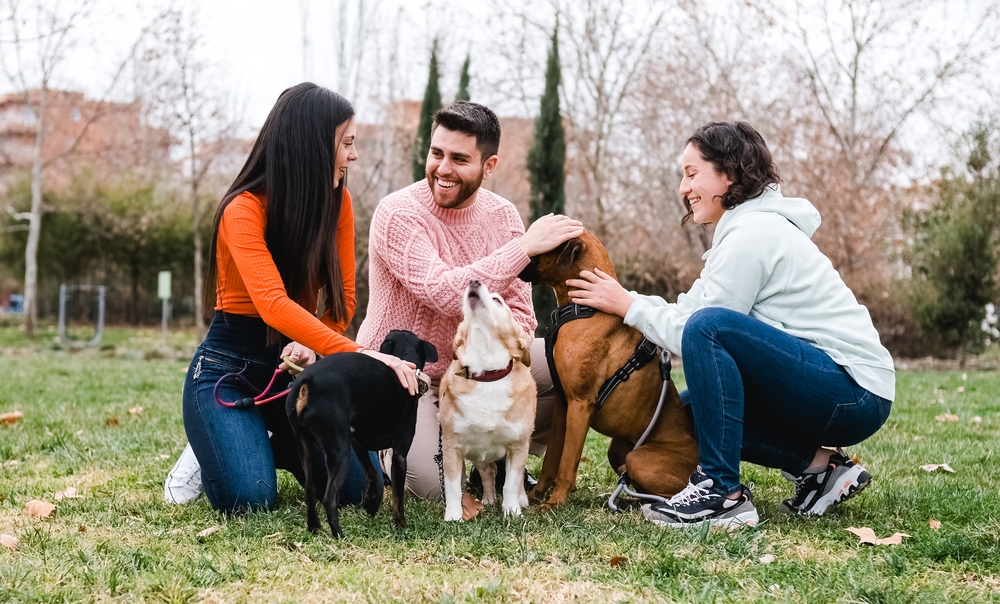
Before You Go: Do Your Homework
Understanding that all dog parks are not created equal is crucial to your experience. If you show up to a dog park for the first time without having done some homework, you might be in for a bad time. Therefore, the first thing you should do is: Google it.
Google Maps is awesome for scouting dog parks.
- Address/Location
- Hours
- Peak Hours
- Rules & Regulations
The address is a no-brainer but the hours and peak hours are easy to overlook. Check the schedules and read the sidebar on Google Maps. If you’ve got an off-leash dog park within walking distance, congratulations! Don’t take that good fortune for granted because most of us must travel a fair distance.
Moreover, you should know (or find out the hard way):
- Surface: Grass, sand, artificial grass
- Obstacles: Trees, fencing, bodies of water, benches, etc.
- How often do they clean?
- Are there plenty of trash cans?
- Do they supply plastic bags for poop?
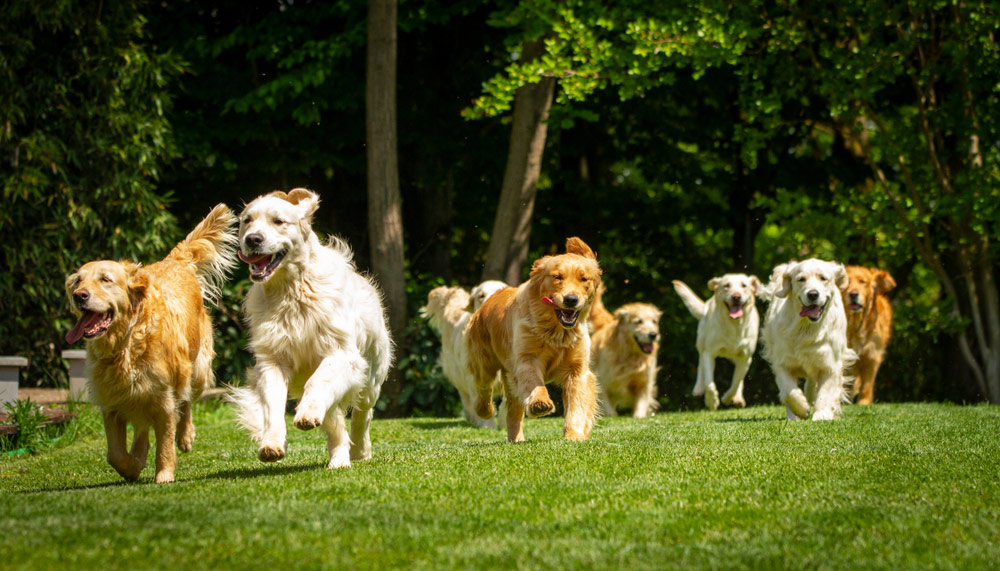
Common Dog Park Rules for Dogs & Owners
There’s a lot to discover about dog parks, and learning the ins and outs will take some time and effort. Of course, you could just roll up and see how it goes, but…a couple of things will automatically postpone or cancel your trip to the dog park.
Some dog parks may have variations of the following theme, but here’s a selection of common off-leash dog park rules.
- One: Dogs must be licensed, vaccinated, and tagged/collared.
- Two: Owners should have a leash visible at all times.
- Three: Dogs showing aggressive behavior should leave the park immediately.
- Four: Owners are responsible for injuries caused by aggressive dogs.
- Five: Puppies are strongly discouraged from entering the park.
- Six: Dogs “in season/heat” are prohibited from entering most off-leash areas (this is common sense).
- Seven: Dogs with diarrhea or vomiting should avoid the dog park.
- Eight: All dog park users assume all risks related to dog park use.
- Nine: Children under the age of 18 must be accompanied by an adult.
Does Your Dog Need A Dog Park?
If your dog already gets plenty of exercise and has an active social life that includes other dogs (or animals), he or she is probably at the low end of the “need spectrum” for a dog park.
On the flipside, my dog Milo is a young Husky/Pitbull mix and he needs at least two hours of hardcore exercise every day to exhaust his energy supplies. He’s not going to get that at home. You know what a tired dog doesn’t do? Chew up your furniture!
Socialization is so important for most dogs. Having the chance to meet and play with other dogs is priceless for those pups who don’t have siblings, who live alone, or otherwise spend all day with a human.
I used to think I knew happiness until I saw Milo at a dog park for the first time, but only you can answer the need vs. want question. Milo needs a dog park.
Is Your Dog Built For The Dog Park Experience?
With exercise and socialization in focus, it seems like all dogs should enjoy dog parks, but this is not a one-size-fits-all situation. Many dog parks have a separate section for smaller dogs, so size isn’t the primary issue, but we still need to talk about it.
Does Size Really Matter?
Yes and no. Smaller dogs can hang with the big dogs, but it’s a tricky situation. Most of the larger dogs will go out of their way to accommodate a Beagle in the mix, but the medium-sized terrorists like Huskies and Labradoodles don’t care.
On the other hand, timid or excessively argumentative toy breeds don’t always fare well in a popular off-leash area with larger breeds running around at full speed. They get trampled. I’ve seen it more than a few times.
Many small dogs have a “big dog” attitude and they love the off-leash large dog area. But you need to know your dog. Otherwise, somebody—most likely a dog—could get hurt.
Owners of small dogs usually (and wisely) take them to the appropriate section of the park.
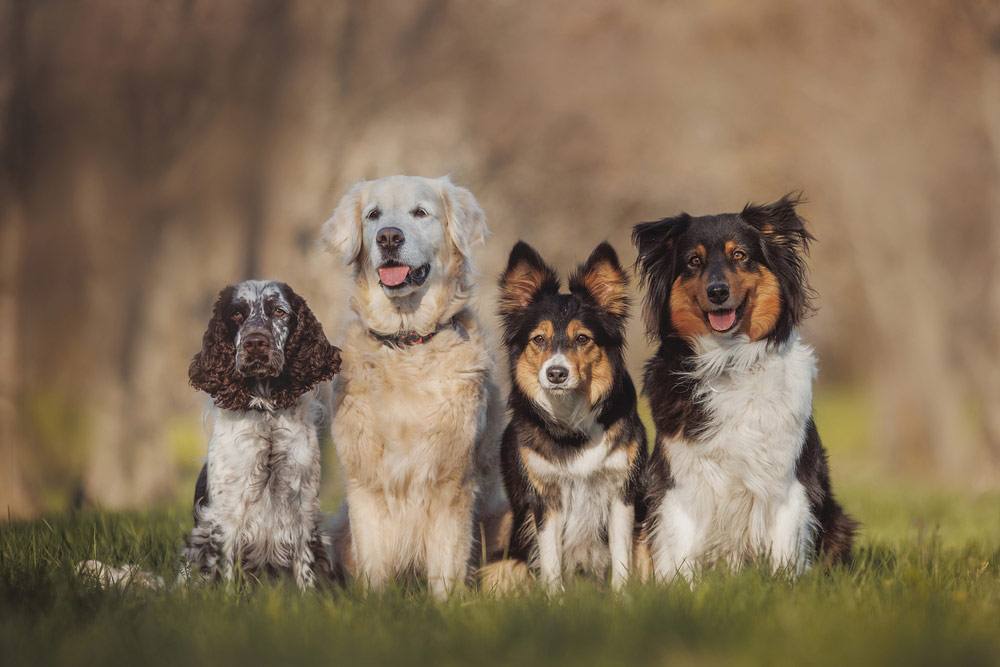
Is Your Dog Ready For the Dog Park?
Your dog’s temperament and socialization are far more important than breed or “build”.
Ask these questions:
Q: How Does Your Dog Play With Other Dogs?
“How” is important. Every dog has his or her unique style of play. Some are antagonists, others are protagonists, and still others are laissez-faire about the whole thing as long as there’s some action, so they can take it or leave it.
If your pup enjoys being around other dogs, and doesn’t get salty when things don’t always go their way, the dog park is paradise. If your dog doesn’t really understand the concept of “play” just yet, give it time. Some rescue dogs may need more than a few visits to find their groove at the dog park.
We’ve been to dog parks where it was just me and Milo, and it was okay; he got to run, sniff, and mark his “territory”. But it’s so much better when other dogs are around, and even better if Milo knows them from previous visits. In their own ways, dogs make friends and enemies, just like people.
You have no way of knowing what other dogs are going to be at the park. You might have a good idea if it’s your morning routine, but you don’t know for certain. Every now and again, a pair of dogs will dislike each other intensely. It doesn’t always turn into a fight, but it can—in an instant.
Likewise, it sometimes happens that one dog takes a fondness to a dog who doesn’t exactly reciprocate the love. Occasionally, Milo will start “tracking” on a dog—Kingsley, for example, who we see every Sunday morning.
Kingsley and Milo love to play together, but Milo has too much energy and Kingsley needs a break. Milo doesn’t understand that, and he’ll start “tracking” Kingsley, walking and running alongside with his head and snout pressing into Kingsley’s jowls. Milo will hound him like this until Kingsley rolls over. And…if I’m not there to pull him off, Milo will go for Kingsley’s neck.
Kingsley’s owner thinks this is hilarious. Other dogs and owners might not be so laid-back about it.
Q: Does Your Dog Like Other Dogs?
Milo loves other dogs, but not all the dogs at the park return his love. Some just like to hang by themselves. It’s not a socialization problem. Like some people, they prefer to be left alone to do their own thing.
“Doing your own thing” in a dog park is totally doable—even playing fetch. Just don’t count on it. If there are other dogs involved, contact is inevitable, especially if dogs like Milo are on the scene.

Q: Is Your Dog Easily Intimidated?
Just walking through the gates and entering the dog park is often the most difficult part of the experience for some dogs. It’s a new place and strange dogs are coming and going. Sometimes there’s a welcoming committee of other dogs, and that causes problems for some pups who’re lacking a bit of confidence in the situation.
Q: Is Your Dog Spayed/Neutered?
It doesn’t matter to me if you get your puppy fixed. However, there are some people at the dog park with…opinions. And many of them think you shouldn’t bring an unspayed or unneutered dog to the park.

Are You Ready for the Dog Park?
A recent study by the National Park and Recreation Association found that over 90% of Americans believe that dog parks are good for the community, and their reasons are fairly solid.
- A protected space for your dog to exercise and run freely
- Opportunities to socialize with other dogs
- Facilitates pet-owner interaction on a physical level
However, there’s yet to be a study that looks into the benefits of dog parks for humans—aside from the benefits for their pets.
Let’s not fool ourselves into thinking that all dog owners are social creatures, or even pleasant to be around. I’ve seen plenty of anti-social people at the dog park, and frankly, they don’t seem to be enjoying themselves. Their dogs are typically less-than-social as well. Of course there’s no scientific evidence to back this up, but friendly people tend to do better at the park. I’ll talk more about this later.
At the Park: Dogs vs. Owners
To fully consider the dog park dynamic, we can look at dogs and dog owners as one inseparable unit, and likewise, two independent variables that must be approached from alternative perspectives. Both will interact with each other in random yet important ways.
Dogs don’t make or break a dog park experience; people determine the experience.
The dog park doesn’t have to be a social event, but it’s so much more pleasant when people say good morning/hello/etc., and even better when you start to learn the dog’s names.
However, you’re not obligated to engage in any kind of social interaction at the dog park. At least half the people at our park stick to themselves. I’m cool with it and you should be too. Don’t expect people to be friendly just because they have a dog.
Above all, not all dog parks are good for dogs, and not all dogs are good for dog parks. Likewise for the owners.
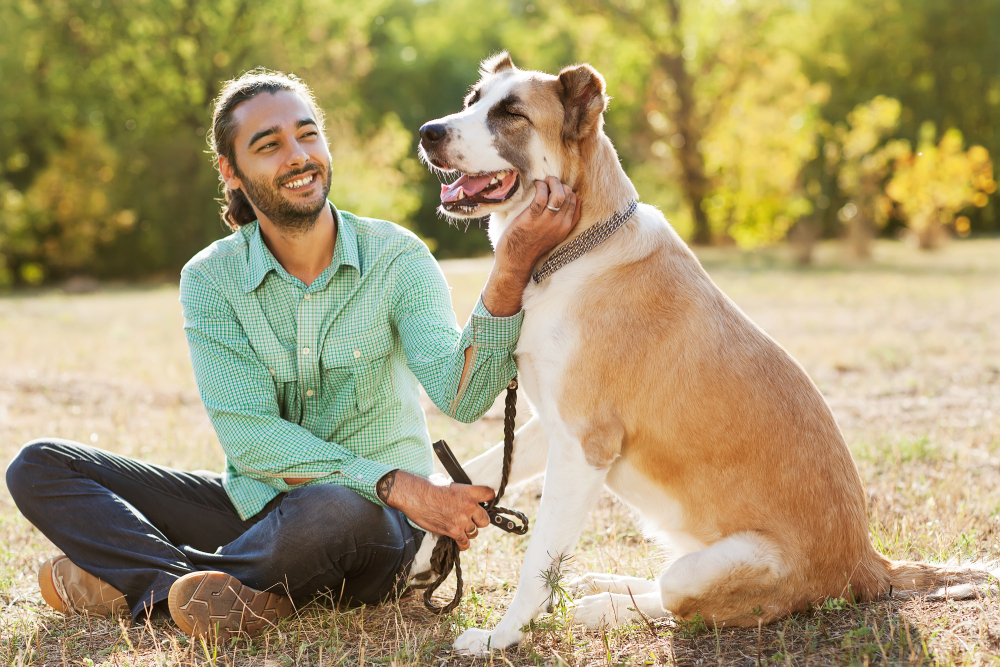
Dealing With Other Dog Owners
Owners are responsible for their dogs. Period. Nearly every single problem I’ve witnessed or experienced has been about the owners, and not necessarily about the dogs. Ultimately, if you bring your dog to the park and he’s a jerk, that makes you a jerk because you probably shouldn’t have come to the park—or you came ill-prepared.
The following sections detail the ways in which people get in the way of the fun. The majority of owners at the dog park are super cool, like-minded folks who love their dogs and respect the people and pets around them. But that’s about where the similarities end. Here are a couple of things you need to know about your comrades at the park.
A Word About Firearms at the Dog Park
Without prejudice, I/ we understand that citizens of the US and other countries have the right to carry firearms in public. Some states have open carry laws that allow people to walk around with whatever legal firearm they see fit—strapped to their shoulder or hips or wherever. There’s absolutely no argument or judgment from me/us.
However “legal” it may be to bring a firearm to a dog park, please don’t. There’s absolutely no reason to have a gun in this environment, and frankly, you’re very likely to scare the daylights out of people, which is wrong on every level.
“Dogs Being Dogs”
In roughly six months of daily dog park visits, I can say without hesitation that I’ve heard the phrase “dogs being dogs” at least twice a week. And if I didn’t hear it, I probably said it to another dog owner when one of our dogs was acting out of line.
If you’re not okay with your dog being a dog, the dog park is not a good place for you.
Poop Patrol
Not everybody is vigilant about cleaning up after their pets, and only a fool would wear a nice, new pair of shoes to an off-leash dog park. There are people who simply don’t care about cleaning up after their pet, and they suck.
Dogs have different pooping routines at the park. Milo, for example, is ready to take a dump within 3–5 minutes of arrival, so I’m armed with poop bags and on his trail. Most of the owners at our park are pretty good about Poop Patrol; however, it’s a big park, and sometimes the dogs get out of our sights, and sometimes they have a bowel movement and we don’t see it, which leads us to the next point.
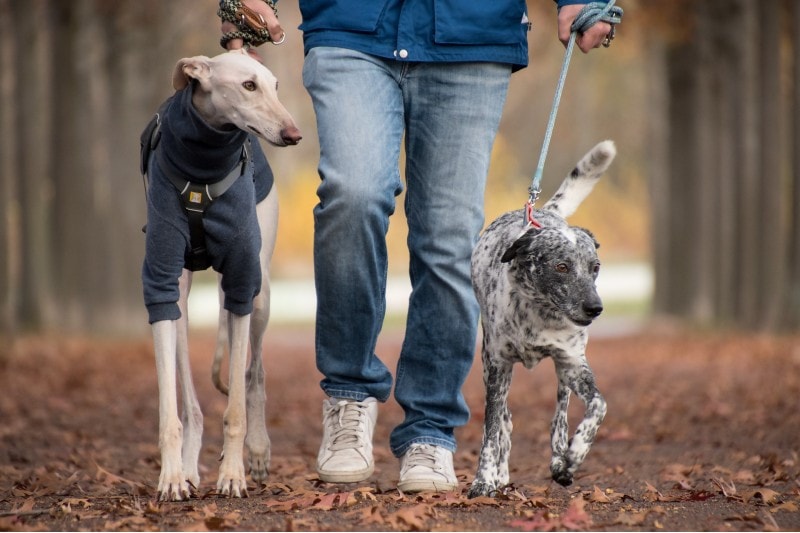
Supervision vs. Engagement vs. Observation
I’ve learned three primary modes of owner presence at the dog park: supervision, engagement, and observation. Many owners will exhibit all three during a single visit, but some owners fall squarely in one category or mode.
Supervision Mode
Milo was just under a year old when he first came to the off-leash dog park, and I followed him around like a tracking drone for the first month or so. Supervision Mode is the most extreme and least fun of all. If you don’t trust your dog, you’re all about SM. Even now, while seated on the bench in Observation Mode, I’ll quickly switch into Engagement Mode to correct his behavior, but I’m not going back to SM any time soon.
Engagement Mode
A selection of dog owners aren’t there to socialize; they’re all business. These owners usually walk in with their dogs on a leash as opposed to the dog breaking like a bat out of hell as soon as he/she hits the gate. These owners have a routine and a laser focus on their dog, never letting them out of their sight. Some do laps around the perimeter, and others come to play fetch in an isolated part of the park. Many have little or no interaction with other dogs or people except a “good morning” if you cross their paths.
Engagement also covers discipline and intervention. These “fetch dogs” don’t get upset often, but owners engage anytime they need to break up a skirmish or correct a behavior. If Milo starts humping a more submissive dog, I’ll scold and pull him off the poor thing, which should be “textbook engagement”.
Observation Mode
Now that I’ve got experience, once Milo is through the gate, he’s on his own—like unleashing a teenager in an amusement park with a pocket full of money and fun tickets, theoretically, of course.
OM owners are on Poop Patrol upon entry, but once they’ve bagged it up, they find a cozy place to sit on a bench and chill out. Some bring their own chairs, and later in the morning is like a coffee social in the center of the park.
Observational owners interact with the dogs as it occurs organically, but they’re not watching their dog or any other dog with specific intent. They basically let the dogs sort it out.
The Ball Hog
For reasons yet to be determined, some owners come to the park and expect to play fetch with their dog and their dog only. And they get upset when another dog inevitably steals their ball. If your dog is the thief, you’re forced into a choice: Do I get involved and try to get the ball back or should I let this resolve itself?
Other Factors To Consider

Socialization Goes Both Ways
Whether it’s interaction with humans or other animals, dogs need a variety of social encounters on a daily basis to develop communication skills, and ultimately, confidence. Dogs that don’t interact with other animals, and those who spend the majority of time alone or with one person, may not immediately take to the free-for-all environment of an off-leash park.
Fortunately, the dog park is a great way to encourage healthy socialization; however, under-socialized dogs must be supervised with care and forethought before they get to the observational mode.
Some dogs have better social skills than their owners. It doesn’t happen often, but every now and then, there’s a skirmish between owners.
Some dog owners don’t like the idea of letting their dog run (relatively) wild in an outdoor setting with a bunch of other overstimulated dogs, where they can exchange bodily fluids and ostensibly, get sick or injured. And make no mistake, dogs can get sick or injured at the park. Same goes for owners.
Humping Happens
Most dogs grow out of the humping phase, but it happens, and most people are good-natured about it. But not all. Humping isn’t about sex, it’s about play or social status.
Of course, none of us like to see or encourage this behavior in our dogs, but honestly, it’s almost not worth the hassle to stop it—unless some other dog owner gets aggravated. As I’ve seen time and time again, if Milo starts humping a dog and the other dog doesn’t like it, the dog will let Milo know, “Hey! Stop it.” He stops.

Conclusion
Remember: the park is about dogs being dogs. They have an entire library of “dog things” we vaguely understand—humping, obsession with smells, peeing everywhere, etc. If you’re willing to let them be dogs, you’ll have a good time at the dog park. If you try to micromanage the experience, you run the risk of ruining the experience for you, your dog, and maybe some other dogs and owners.
Do your homework, be cool, and your dog will reap the benefits of the dog park.
Featured Image Credit: elbud, Shutterstock

